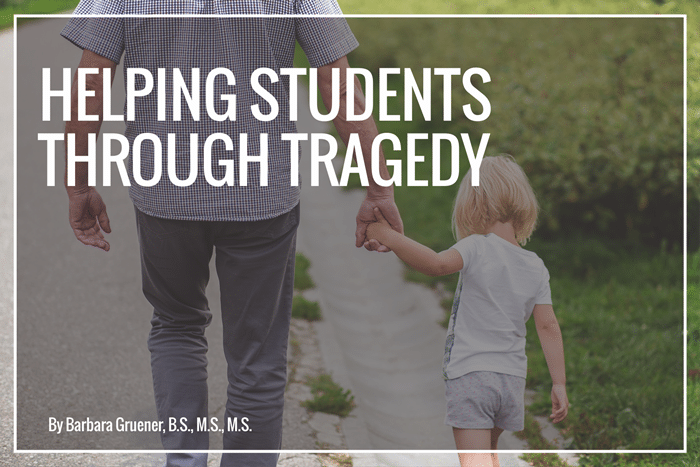By Barbara Gruener, B.S., M.S., M.S.
A school is supposed to be a safe and happy place where children go to learn and grow, not a place of terror and fear; unthinkable tragedies like the Sandy Hook Elementary shooting devastate not only those directly involved, but people around the world.
And like most of us, children may be confused, frightened, even angered by the news of a school shooting. They will be looking to grown ups for guidance on how to respond and react.

So what do we do on Monday when we return to our classrooms after a devastating day like the one we experienced as a nation on Friday?
We can help children cope by establishing a sense of security and routine and helping them understand and manage their feelings. Keeping in mind to always follow your school district’s crisis-response guidelines, here are some things that we as educators might find helpful as we walk with our children and process the event.
Helping Children Cope
1. Validate their concerns if they’re talking about it.
It’s okay to say, “That was horrible, wasn’t it?” Let them know that any and all feelings about the event are perfectly normal. A composed and relaxed attitude from you will provide a greater sense of security for your students, but this doesn’t mean that you can’t be sad with them. One of the most authentic ways to validate their feelings is to let them see yours.
2. Take their lead.
Let students tell you what they know and answer their questions as truthfully as you can without sharing too much information.
3. Monitor their behavior.
Watch for raw emotions to come out through their play. Help students work out their fears and respond to their feelings through dialogue, role-play, music and art. Contact the school counselor if their behavior becomes out-of-bounds or changes dramatically.
4. Calmly reassure students that they are in the care of trustworthy adults and that you are there to keep them safe.
It’s okay to let them know that this is not likely to happen to them. Some students may need to be physically reassured so don’t be afraid to give out plenty of hugs and high fives. Review your safety procedures so students know that you have a plan in place.
5. Discourage your students from watching the news without a caregiver there to talk through it with them.
Encourage parents to limit their child’s exposure to the media coverage of the disturbing details. Vicarious over-exposure to experiences like this can be traumatizing in and of itself.
6. Elevate their empathy by finding out what they would want and need in a scary situation; discuss how they can help.
Children will regain their sense of power and security more quickly if they feel they can be of assistance in some way. Consider praying or thinking hopeful thoughts of healing for the friends and families of the victims. It may be a good time to write a poem or draw a picture to help your students express their feelings and get the sense that they are somehow supporting the Sandy Hook school family through this difficult time.
For more ways to help children understand, process, and begin to heal from this horrific event, stop by The Corner on Character by clicking the button below…
– Originally posted on Teaching Blog Addict
| Submit Your Tip |
Have You Seen
- Classroom Management: Developing Community and Character
- Glow and Grow Teaching Strategy: Self Reflection
- Create a Safe Spot {Classroom Setup}

Barbara Gruener, B.S., M.S., M.S. - Corner On Character
I'm a school counselor, character coach, and author in Friendswood, Texas who hopes that you'll find something that will positively inspire, intrigue or influence you while you're here.